BusinessNow: Live coverage of financial markets and companies, plus analysis and opinion
Local market heavyweights are being hit hard, with miners and banks all languishing in the red.
- It’s an ugly one out there
- IPO market sparks
- Sigma shares rocket
- Housing market’s ‘fallacy of averages’
Welcome to the BusinessNow blog for Thursday, September 8. Today, trade data is out, while Sigma Pharmaceuticals has reported first-half results.
8.27pm:OECD signals little Brexit impact
The outlook for the global economy hasn’t changed as a result of the UK’s vote to leave the European Union, according to leading indicators released on Thursday by the Organisation for Economic Cooperation and Development.
The Paris-based research body suspended publication of its gauge of future economic activity in July, saying the vote made it difficult to interpret a variety of data series that have a history of anticipating swings in future economic activity.
In advance of the vote, many economists worried an unprecedented decision by a large, developed economy to change its economic relationship with its neighbours could create high levels of uncertainty that would hinder growth in Europe and further afield.
But its composite leading indicators show that the vote to leave the EU has had little immediate impact outside the UK.
“Although there remains uncertainty about the nature of the agreement the UK will eventually conclude with the EU, the volatility in data that emerged in the weeks immediately following the referendum appears to have reduced,” the OECD said. Read more. Dow Jones.
7.54pm:Law firms ready for turbulence
The gloss has gone off the short-term business outlook for the nation’s law firms due to tough competition and falling demand for legal services,writes Chris Merritt.
A net 24 per cent of law firms say current business conditions are negative — a slight deterioration from February when just 18 per cent believed conditions were negative.
But while law firms are more cautious about their prospects, they believe revenue will rise in 14 out of 15 practice areas with energy and resources the exception.
The firms are more confident about the prospects for the national economy. Just 13 per cent had a negative outlook for the economy compared with 18 per cent six months ago.
But that confidence is concentrated in the mid-tier firms. Read more.
7.07pm:Britain spends big on Brexit advice
Theresa May’s new Brexit department has spent tens of thousands of pounds on legal advice in the eight weeks since its creation, according to official figures.
Britain has yet to formally start talks to withdraw from the European Union, with the Prime Minister and Brexit Secretary David Davis coming under fire for revealing little detail about their plans to MPs.
But the Department for Exiting the European Union said its legal bill has so far reached an estimated £268,711 ($A464,870) - an average of around £33,500 ($A57,974) a week.
Officials are still assessing the total amount of taxpayers’ cash required for legal advice over the next 12 months when the UK Government is expected to have invoked Article 50 of the Lisbon Treaty, thereby triggering what is predicted to be a complex two-year negotiation process.
AAP
6.51pm: ECB weighs stimulus as inflation lags
The European Central Bank is weighing whether to increase its efforts to boost stubbornly low inflation in the 19-country eurozone at Thursday’s meeting of its governing council.
The 25-member council led by President Mario Draghi could decide to extend its current bond-buying stimulus program, which is pumping newly printed money into the financial system.
Some analysts, however, think the bank is more likely to postpone action to its October or December meetings, or not act at all.
Mr Draghi and the ECB are faced with inflation of only 0.2 per cent annually, far below the bank’s target of just under 2 per cent. Chronically low inflation suggests the economy is not hitting on all cylinders, even though the currency union is enjoying a moderate economic upswing. Low inflation also makes it harder for heavily indebted eurozone states such as Greece to become more price competitive relative to other economies.
New inflation projections compiled by ECB staff may give some hint about the bank’s future actions. In June, they forecast inflation of 1.3 per cent for next year and 1.6 per cent in 2018. Lowering them would support arguments for more action.
So far, the ECB has slashed its benchmark interest rate to zero, with the aim of lowering borrowing costs for companies and consumers. It has poured 1 trillion euros of newly created money into the banking system through bond purchases, out of what is to be 1.74 trillion euros through at least March 2017. It has also imposed a negative interest rate of 0.4 per cent on deposits left with it by commercial banks. That is in effect a tax aimed at forcing banks to lend excess cash, instead of hoarding it.
But inflation has been slow to respond. The question is whether the ECB needs to do more now, or wait and let previously announced measures take their full effect before contemplating additional steps.
Some economists question how much good more central bank action will do, in the absence of steps from European governments to improve growth. Draghi has urged governments that have the money to invest more in infrastructure, and to cut back on red tape and regulatory permissions that make it harder to start a business. Britain’s June 23 vote to leave the European Union has raised concerns that trade with the eurozone might suffer, hurting European growth. But so far there has been little hard data to show that’s happening.
The ECB could extend the earliest end date for its €80bn purchases beyond the current March, 2017. It has said the purchases will continue until then or until inflation picks up. It could also loosen its self-imposed limits on how much of any particular bond issue or issuer’s bonds it can buy. That would reassure anyone worrying that the bank will have to end the stimulus effort early for lack of bonds to purchase.
It also could eliminate its ban on buying bonds yielding less than the minus 0.4 per cent deposit rate. That also would enlarge the universe of bonds it could buy; German two-year government bonds currently yield minus 0.67 per cent.
AP
6.34pm: Apple seeks ‘premium’ above all
The iPhone7 is out and Apple has predictably decided against giving its flagship a radical overhaul, writes Supratim Adhikari.
It’s a perfectly reasonable decision and while some will criticise the lack of any meaningful ‘innovation’, Apple hasn’t been interested in that for some time.
The word that really matters to Apple is ‘premium’, which the tech giant has become supremely efficient in turning into profit.
Every September the company mobilises to set the bar on what a premium flagship should be and if has mostly managed to do that again with the iPhone 7. Read more.
4.25pm: Blue chips pain the market
Australian stocks were pulled lower today as blue chips gave back this week’s gains and broad-based selling spread through the market.
At the 4.15pm (AEST) official market close, the S&P/ASX 200 was 0.7 per cent weaker at 5385.8 points. It had regained some ground after touching a fresh eight-week low earlier in the session.
Meanwhile, the broader All Ordinaries index gave back 36.5 points, or 0.66 per cent, to 5484.6.
Major banks and miners pulled the market south, with ANZ, BHP and Macquarie among the biggest laggards.
Woolworths also weighed as it traded ex-dividend and lost 3.5 per cent, while Wesfarmers ended the session slightly positive.
BHP fell 1.2 per cent to $20.26 as the price of iron ore slipped 1.2 per cent in the most recent session, while Rio Tinto edged 0.3 per cent lower to $48.02 and Woodside Petroleum lost 1.6 per cent to $28.01.
ANZ fell 1.1 per cent to $27.08 as investors see the stock sitting well above its 2016 lows following a healthier rally than peers, while CBA dropped 0.7 per cent to $72.06, NAB lost 0.5 per cent to $27.67 and Westpac trickled less than 0.2 per cent lower, to $30.03.
Telstra gave up 0.6 per cent to $5.11, and Macquarie dropped a sharp 1.9 per cent to $81.39.
Sigma Pharmaceuticals was the star performer, shooting 11.3 per cent higher to $1.28, following a boost to the company’s earnings guidance, while gold miner Saint Barbara chalked up a session as the worst performing ASX 200 stock as it lost 6.5 per cent to $2.88.
4.13pm:Get with start-up culture: Microsoft
Australia’s business culture needs to change to encourage innovation and start-up companies, the boss of technology giant Microsoft’s local operations says.
Pip Marlow, managing director of Microsoft Australia, said Australians are more pessimistic than Americans when thinking about business opportunities. If an American was told about someone working on their fifth start-up after four failures, they would be very enthusiastic about their future, Ms Marlow told a business lunch.
But an Australian would commiserate about the failures. Read more.
3.30pm:RBC upgrades Rio Tinto
Rio Tinto has been upgraded to outperform from sector perform at RBC Capital as, it says, “higher iron ore prices drive value support”.
Analysts, led by Paul Hissey, say Rio’s recent underperformance against BHP has been more to do with BHP’s exposure to oil, which has been rallying much harder than iron ore.
“Alongside a more positive view on the iron ore market, Rio provides a more attractive valuation than its major domestic peers and committed growth. We upgrade Rio Tinto to Outperform and increase our price target to $58.”
Rio Tinto shares are 0.6 per cent higher in afternoon trade, strongly outperforming BHP, which is down 6.7 per cent.
In the year to date, Rio is up 6.7 per cent, while BHP has doubled that.
3.10pm:Myer Family’s Melbourne exit
Global fund manager TH Real Estate has swooped on a one-third interest in venerable department store property, Myer Melbourne, with the deal valuing the high-profile complex at about $454 million and marking the exit of the Myer Family Investments.
The deal, foreshadowed by The Australian in May, was cut at a crisp initial yield of 4.5 per cent, reflecting the record values to which premium retail properties in the heart of major cities have soared.
It also marked the replacement of one of Melbourne’s most storeyed families with a $US97 billion property funds heavyweight — TH Real Estate’s parent US financial services group TIAA — on the ownership register.
Ben Wilmot
Read more
2.56pm:Time to get on board Qantas shares?
Qantas is one of the cheapest stocks in the S&P/ASX200, trading at a bargain basement six times forward earnings.
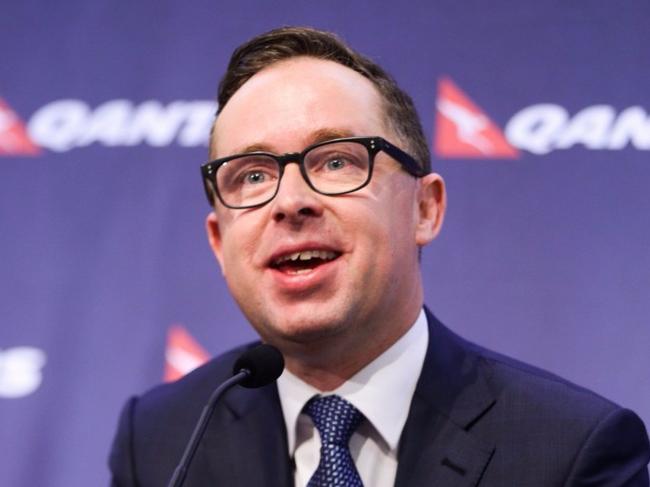
While the airline faces challenges, analysts highlight a number of tailwinds that could lift the share price higher in coming years. Qantas has thrived in the weak oil price environment. Whether by design or luck, the airline’s lack of jet fuel hedging at a time of falling oil prices has allowed it to enjoy a bigger boost to profits -- which swung to a record high $1.52 billion in the 2016 fiscal year -- than well-hedged rivals such as Cathay Pacific. Now Alan Joyce is embracing hedging to lock in low fuel costs for longer as the oil price has crept higher this year.
Morgan Stanley analyst Nick Markiewicz notes fuel costs for 2017 are now, at worst, fully hedged at $3.2bn, the same level as 2016.
Juicier shareholder returns should also help narrow the valuation gap with global airline stocks as stronger profitability translates to higher dividends and the possibility of share buybacks.
Credit Suisse analyst Paul Butler expects the carrier to pay an average 8 per cent dividend yield over the next three years on its current share price of around $3.25 a share.
The forecast yield is higher than the big four Australian bank stocks, which boast a strong international following among income investors.
Dow Jones
2.31pm:China oil imports crack 2016 high
China’s oil imports rose to their highest level this year in August, as refiners continued their brisk buying of low priced crude.
China imported 32.85 million tons of crude oil in August, equivalent to 7.8 million barrels a day, preliminary data from the General Administration of Customs showed on Thursday.
Imports were the highest since December, when they stood at 33.19 million barrels. They were also 7 per cent higher than the 30.7 million tons of crude shipped during August last year and up 6 per cent from the 31.07 million tons in July.
Oil imports to China have been elevated all year, helped by strong buying from the country’s independent refiners, known as ‘teapots’.
1.45pm:Shareholders set for $24bn windfall
Shareholders in Australian companies will receive around $24 billion in dividends following the latest profit reporting season, despite muted profit and earnings growth over the past year, according to a new report.
A record 92 per cent of companies that reported full-year earnings results will issue a dividend, with the majority maintaining or lifting payments, the CommSec report found.
AAP
Read more
1.20pm:ANZ, Woolies, Macquarie deep in the red
ANZ, Woolies and Macquarie are sucking the life out of the local market today, which is heading for its worst fall in five weeks.
At 1pm AEST the S&P/ASX 200 was 0.9 per cent lower for the day – making another negative week a real possibility, a bad look after last week’s 2.6 per cent drop.
If the ASX 200 closes at this level it’ll be the worst one-day fall since August 3.
ANZ is copping a sharp 2 per cent fall and is noticeably underperforming peers, which could be due to the much stronger year it’s been having.
READ: ANZ shares are mopping the floor with CBA this year
The rest of the big four banks are down between 0.3 per cent and 0.6 per cent, while BHP has dropped 1.7 per cent and Rio Tinto has slid 1.4 per cent.
Woolworths is weighing heavy as it trades ex dividend, down 3.2 per cent, while Macquarie has slumped 2.1 per cent.
Sigma Pharma remains the top performer by a mile, up 11.3 per cent after upgrading its earnings guidance, while Whitehaven Coal is the lagger of the index, down 6.2 per cent.
12.45pm:ANZ’s management shake-up
ANZ chief operating officer Alistair Currie will step aside from the banking giant later this year as he looks to pursue opportunities offshore, paving the way for a shake-up of the group’s management team.
The bank announced the changes to its technology, operations and shares services model today to account for the “planned move” from Mr Currie after five years in the COO role, with a direct replacement not named.
The activity will see chief information officer Scott Collary report directly to chief executive Shayne Elliott once Mr Currie departs, while the divisional chief operating officers will report to the heads of their respective units rather than to the soon-to-be vacant COO chair.
Daniel Palmer
Read more
12.20pm:A snapshot of the economy
As the Australian economy pats itself on the back following yesterday’s GDP data, which marked 25 years of unbroken growth, the Reserve Bank has released its latest snapshot.
The RBA has released a snapshot of key economic data for the Australian economy #ausecon – https://t.co/GHhmnmY3MK pic.twitter.com/bxpgjtzyMl
— RBA (@RBAInfo) September 8, 2016
12.10pm:Trade deficit narrows in July
Australia’s monthly trade deficit narrowed in July, aided by a surge in gold exports.
Official numbers from the Australian Bureau of Statistics showed the monthly deficit shrinking 26 per cent to $2.4 billion, beating market expectations for a more modest improvement to a $2.7bn deficit.
The result had a minor impact on the Australian dollar, which lifted 0.05c to US76.78c at 11.35am (AEST).
Daniel Palmer
11.42am:APN Outdoor shares jump
APN Outdoor shares have jumped today on the back of a positive note from UBS on the beaten-up advertiser.
After cutting its full-year earnings forecast on August 22, APN’s stock was swiftly hammered 35.3 per cent, but now it’s time to “re-open the door”, according to UBS analysts, who upgrade the stock to ‘buy’ from ‘neutral’.
The stock jumped as much as 4.7 per cent in early trade, but at 11:30am had cooled off slightly to be 3.3 per cent higher for the day at $5.05.
Following last month’s hefty fall, APN is now trading below UBS’ price target and they say they’re upgrading on valuation grounds.
“We think the structural growth story for outdoor remains intact,” analysts, led by Eric Choi, said, but warned they are still wary of higher rents, regulation and cyclical ad markets.
Read more on last month’s APN Outdoor result.
11.24am:It’s an ugly one out there
Local market heavyweights have been hit hard at the open, with just a couple of big-name stocks not finding themselves deep in the red this morning.
Before the open the S&P/ASX 200 had improved 1 per cent over the first three days of the week, which provided some welcome confidence after last week’s brutal 2.6 per cent drop.
BHP dropped another 1.9 per cent to $20.11 and looks in real danger of dropping back below the $20 mark, while Rio Tinto fell 1.3 per cent and gold miners came back down to earth with a thump following solid gains earlier in the week.
The price of iron ore gave up 1.2 per cent overnight but oil is holding firm, up 1.2 per cent early this morning.
The big four banks aren’t helping out one bit, with CBA down 1 per cent and ANZ giving up 1.6 per cent, while Westpac and NAB slip 0.9 per cent and 0.6 per cent respectively.
Woolworths is a sore spot — down 3.8 per cent as it trades ex-dividend — and Macquarie slumped 2.4 per cent.
11.10am:IPO market sparks in August
The IPO market enjoyed a healthy August, new figures show, despite several high-profile busts in recent months.
The stunning disappointments of recent big name floats such as Dick Smith Electronics, McAleese, Surfstitch, Spotless, Estia and Wellard have failed to dampen enthusiasm among market participants, with the 10 listings in August returning an average 34.1 per cent, OnMarket data reveals.
In all, the 10 new additions to the ASX raised $1.2 billion and their strong share price performance clearly outshone a drop of 2.3 per cent in the broader market.
The overwhelming bulk of the cash raised came through five floats, with the $686 million IPO of Viva Energy REIT the largest of the month.
Daniel Palmer
10.46am:Sigma shares rocket higher
Sigma Pharma shares have rocketed as much as 14 per cent higher at the open as they head for their best day in five years after the company upgraded its earnings guidance.
The pharmaceuticals distributor said it now expects fiscal 2017 earnings growth of 10 per cent and first-half earnings of $48.4 million, up 17 per cent year on year, according to Bloomberg.
Back in March the company said it was targeting at least 5 per cent growth, year on year, for the next two years.
10.35am:Stocks slump at open
The Australian sharemarket has slumped in early deals, continuing a weak run that has seen the local bourse fail to keep pace with offshore markets.
At the 10.15am (AEST) official market open, the benchmark S&P/ASX 200 index weakened 46.6 points, or 0.86 per cent, to 5,377.6, while the broader All Ordinaries index surrendered 44 points, or 0.8 per cent, to 5,477.1.
Morning trade revealed red across the board, with no sector able to shrug off the broad market malaise.
The resources sector was at the heart of the sell-off despite commodity markets ending mixed.
BHP Billiton slid 2.1 per cent to $20.06, Rio Tinto softened 1.4 per cent to $47.47 and Fortescue skidded 2.1 per cent to $4.885.
Daniel Palmer
Read more
10.25am:The housing sector’s ‘fallacy of averages’
The amount of debt in Australia’s red-hot housing market, which is increasingly being referred to as a ‘bubble’ and ‘overextended’, is apparently showing “greater resilience than generally assumed”, according to Credit Suisse analysts.
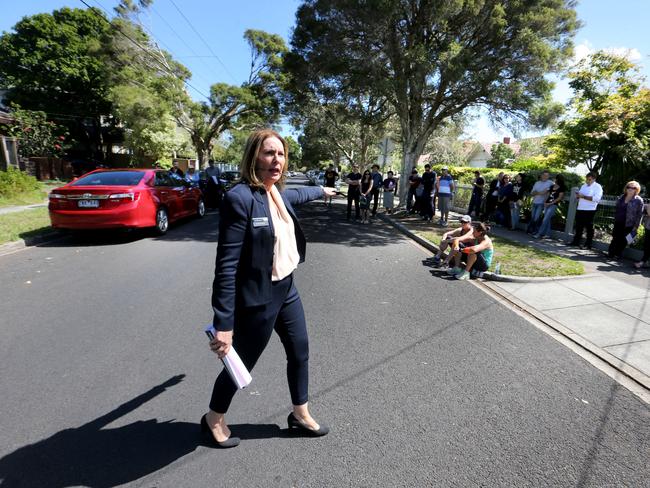
The analysts admit the median mortgage debt in Australia was “relatively high” in 2014 (the latest data the analysts refer to) at $292,000 and has doubled between 2002 and 2014, but argue the debt is skewed to top wealth and income quintile households.
“Housing debt is highly skewed (and skewed more positively than negatively in our view) implying greater resilience within the household sector to financial shocks than is generally assumed,” analysts led by Jarrod Martin said.
“There is a fallacy of averages in merely examining overall household indebtedness.”
“Positives: 31 per cent of households have no debt at all; 32 per cent of homeowners own outright (two-thirds of which have no household debt at all); Bottom quintile income households are quite debt averse.
“Risk segments: Mortgagee households that also hold geared other residential property debt (estimated 5 per cent of all households), given double (and relatively high) leverage; Bottom quintile wealth households with housing debt (estimated 1 per cent of all households), given that median property gearing levels here are high.”
Credit Suisse reiterated its order of preference in the big four Aussie banks — 1. NAB (outperform), 2. Westpac (outperform), 3. CBA (outperform), 4. ANZ (neutral).
Watch another view on the housing market — ‘it’s a disaster zone’.
10.05am:Sigma raises FY guidance
Sigma Pharmaceuticals has raised its full-year guidance after its pharmacy network outperformed expectations in the first half.
The pharmacy wholesale and distribution business (SIP) said its net profit jumped 26.4 per cent to $23.9 million for the six months to July 31.
Its pre-tax earnings lifted 15.5 per cent to $37.3m, while underlying earnings before interest and tax leapt 17 per cent to $48.4m.
9.54am:Data to drive the day
Local traders are keenly awaiting the release of today’s China trade numbers, with Australian shares likely to react, according to CMC Markets chief strategist Michael McCarthy.
“China trade data due today could move commodity markets, and with them Australian shares,” Mr McCarthy said.
And while regional data will take the spotlight, expectations on whether the Fed will move interest rates this month remain all over the place.
“A gap between market pricing and Fed rhetoric on the path of US interest rates is evident,” Mr McCarthy said.
“The Beige Book data that informs FOMC decision making is pointing to tighter labour market conditions and gathering wage pressures. The lack of reaction in markets suggest Fed credibility is tattered after a number of ‘go, no, wait’ calls this year.”
9.45am:Farmers leave Murray Goulburn in droves
Angry dairy farmers in Victoria and Tasmania are leaving milk processing giant Murray Goulburn in droves, saddling the struggling company with less milk to process, looming factory closures and a $183 million “overpayment” burden to claw back from its fewer remaining producers.
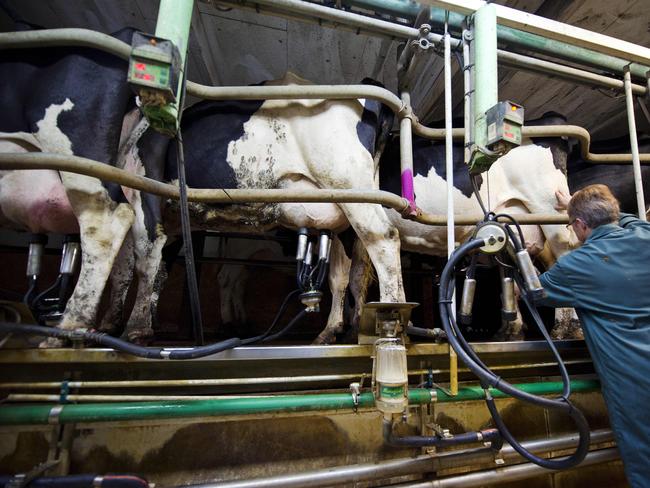
The farm revolt has accelerated during the past month as rival dairy processors paying more for milk have found room in their factories for milk from some of Victoria’s biggest and best farmers.
About 200 of Murray Goulburn’s farmers quickly left the co-operative after it crashed its milk price in April by a shock and retrospective 15 per cent, taking 270 million litres, equal to 7 per cent of its annual milk supply, with them.
9.30am:More buyers tipped to forfeit deposits
Australia’s biggest apartment builder, Harry Triguboff’s Meriton, is expecting more buyers to forfeit their deposits and fail to settle off-the-plan units, saying the strong rate of settlements so far had been underpinned by two years of surging prices.
The rapid price growth, largely in Sydney and Melbourne, had now come to end, said the founder of apartment builder Meriton Group and Australia’s richest man.
“The ones who are settling now have made a lot of money; building on those apartments started two years ago,” Mr Triguboff told The Australian, noting the contract price was struck at that time.
“We read every day how prices in Sydney have gone up by 10 per cent in the last year.”
Turf Condon
Read more
9.20am:Lowe’s in Masters document grab
US hardware giant Lowe’s has surprised Woolworths with another hearing before the
Federal Court today, this time to make an expansive grab for documents relating to the supermarket company’s dealings with its failed hardware chain Masters that could include the planning, strategies, documents and communications around its $1.5 billion fire sale of the business.
Eli Greenblat reports that Lowe’s has scheduled a hearing before the Registrar of the Federal Court this afternoon and its lawyers are expected to ask for a wide range of documents that relate to Woolworths’ announcement last month that it would carve up the assets of Masters, selling it off to a range of buyers and investors, and then shut down all Masters stores.
Read more
8.53am:Ex-dividends rolling through
Plenty of local stocks, including Woolies, trading ex-dividend today so don’t be surprised to see hefty falls from the following:
Woolworths, ASX, AV Jennings, Beach Energy, Sonic Healthcare, Monadelphous, Iluka, Tassal, Corporate Travel, Flexigroup, Iress, Metlifecare, NIB Holdings, OZ Minerals, RCG Group, Sky Network, Trade Me
8.39am:ASX remains under pressure
Australian stocks could face a rough session as banks and miners look to creep lower in early trade.
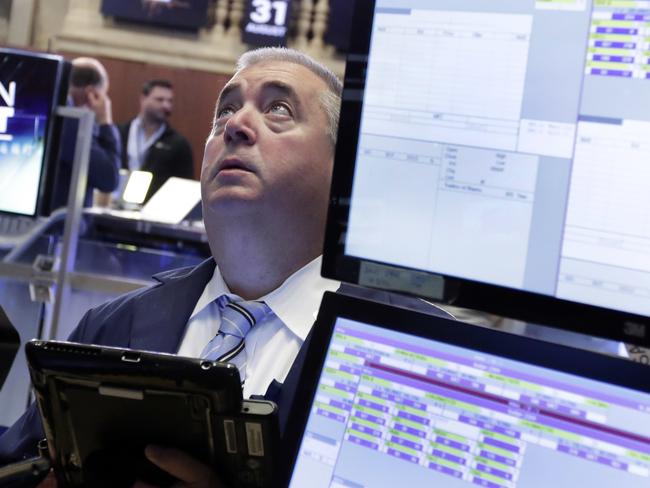
The SPI 200 is pointing to a 0.3 per cent fall at the open, but fair value suggests a 0.5 per cent drop is more likely.
BHP Billiton is heading for a 1.2 per cent fall at the open, according to its ADRs, while CBA could lose 0.4 per cent.
While global sentiment around equities is improving, the ASX is still dragging its heels, according to IG chief market strategist Chris Weston.
“The trend in many developed market equities is higher and that needs to respected, especially with implied volatility just so low. The ASX 200 is the outlier and starting to underperform, although the index has found buying into 5400 [points].”
The local market is 1 per cent higher over the week so far, a welcome rebound from last week’s 2.6 per cent drop.
7.05am:Australian market set to open lower
The Australian market looks set to open lower after a slightly lower finish on Wall Street as investors assessed the outlook for US interest rates.
At 6.45am (AEST), the share price index was down 18 points at 5,396.
The Federal Reserve said in its Beige Book report of anecdotal information that the US economy had expanded at a modest pace in July and August, but there was little sign that wage pressures were being felt beyond highly skilled jobs.
Locally, in economic news today the Australian Bureau of Statistics is due to release July’s international trade in goods and services figures.
In Australia, the market yesterday rose with an early boost from Wall Street keeping stocks in positive territory even as investors sold down on the latest local gross domestic product numbers.
The benchmark S & P/ASX200 index was up 10.6 points, or 0.2 per cent, at 5,424.2. The broader All Ordinaries index was up 10.7 points, or 0.19 per cent, at 5,521.1 points
6.55am:Dollar steady
The Australian dollar is unchanged against its US counterpart ahead of local international trade in goods and services data.
At 6.35am (AEST), the local unit was trading at US76.71 cents, unchanged from yesterday.
The Australian Bureau of Statistics is due to release July’s international trade in goods and services figures at 11.30am (AEST).
AAP
6.45am:Iron ore at six-week low
The iron ore price has fallen to its lowest point for six weeks, sliding for the third day in a row as it continues to edge back from a recent peak above the $US60 a tonne threshold.
Iron ore fell 0.5 per cent to $US58.30 a tonne in the most recent session, from $US58.60 the previous day, and has risen for only two of the past 11 trading sessions.
The commodity is now at its lowest point since July 27, when it settled at $US58, and has been trading in a relatively narrow range since then, reaching a three-and-a-half month high of $US61.80 in August.
Read more
6.37am:Wall St snaps winning streak
The Dow Jones Industrial Average and the S&P500 slipped overnight (AEST), as declines in shares of grocery chains dragged down the consumer-staples sector.
The Dow Jones Industrial Average fell 12 points, or less than 0.1 per cent, to 18526. The S & P 500 fell 0.3 points, or less than 0.1 per cent, to 2186 and the Nasdaq Composite climbed 8 points, or 0.15 per cent, to 5284.
In Europe, stocks rose ahead of a meeting by European Central Bank chiefs on hopes of fresh stimulus measures.
The Australian share market is set to take Wall St’s downbeat lead, with ASX futures down 23 points at 6.30am (AEST).
Dow Jones
Read more
6.30am:Apple unveils new iPhones
Apple has removed the headphone jack from the iPhone 7, but the gamble means they’ve improved other features.
Read more about Apple’s big announcement


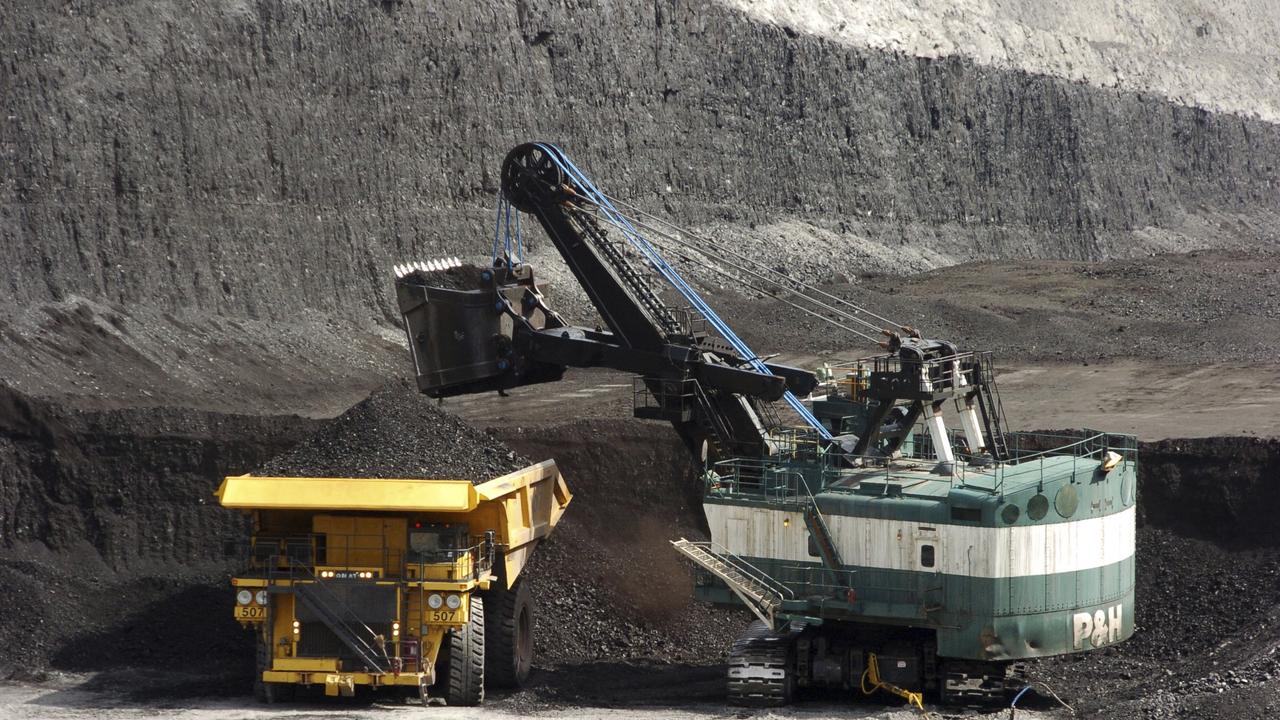
To join the conversation, please log in. Don't have an account? Register
Join the conversation, you are commenting as Logout